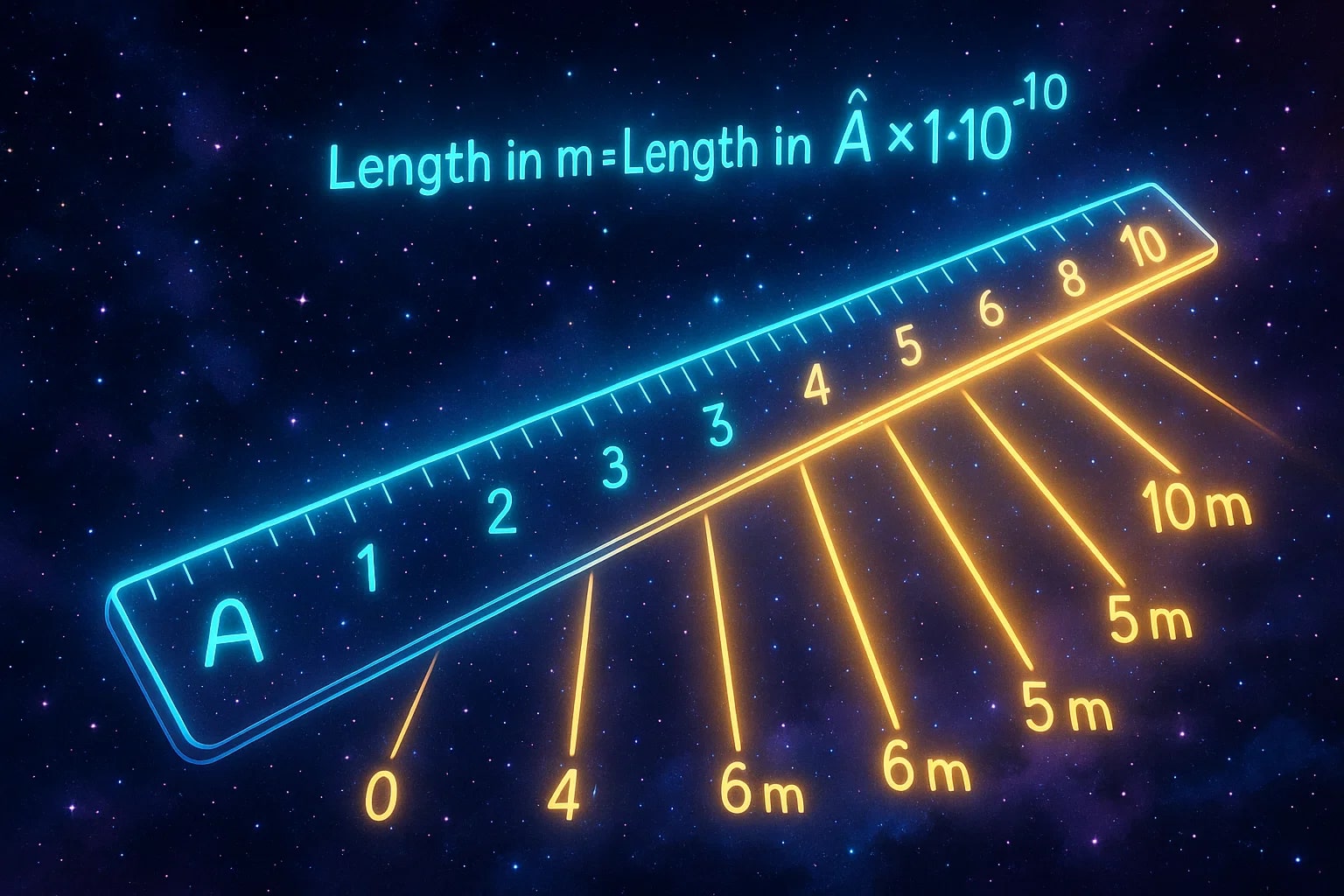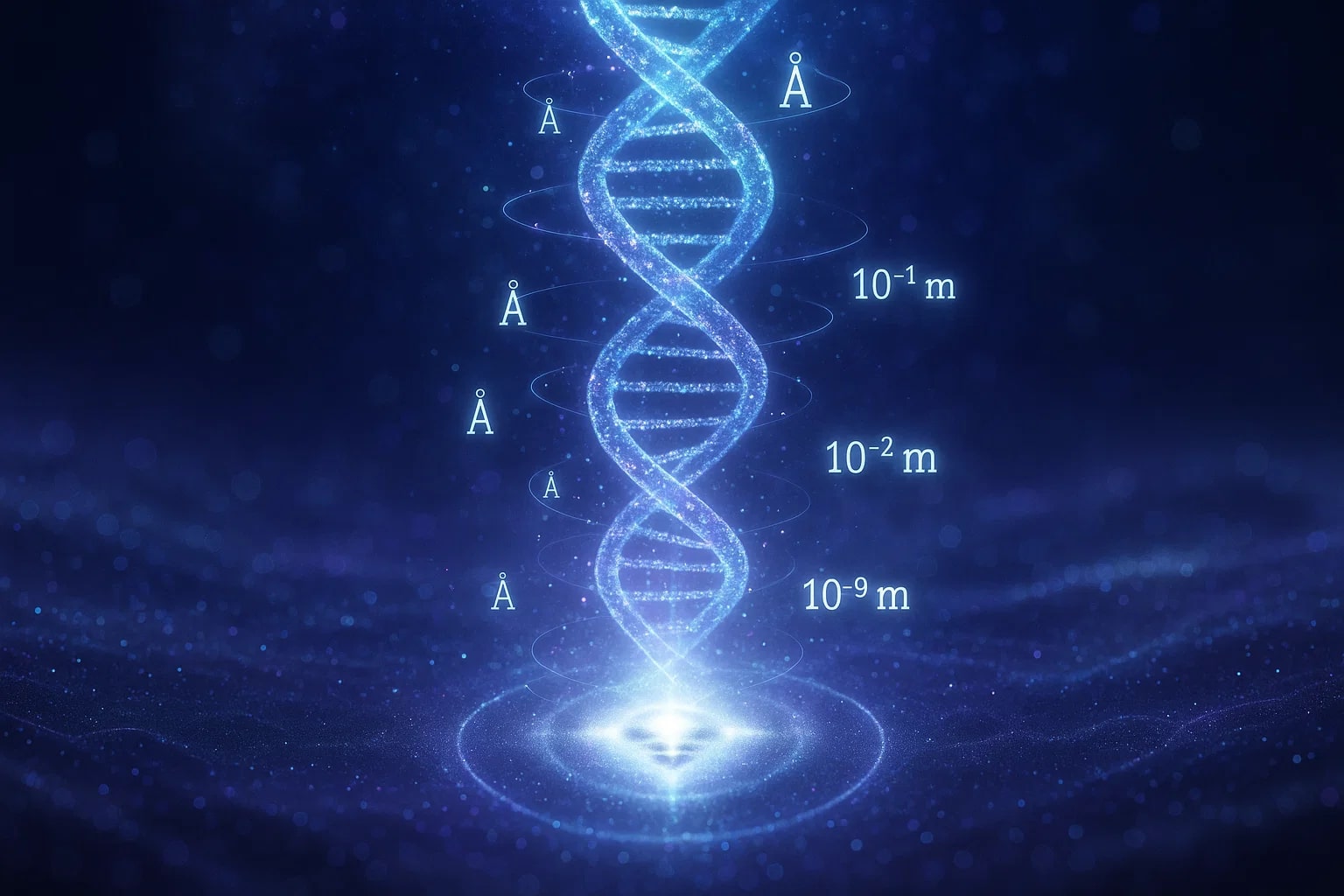angstrom to meter – How to convert Å to m
The angstrom to meter conversion is essential when working at the atomic or molecular scale but needing to express results in standard SI units. The angstrom is ideal for describing ultra-small distances like atomic radii or wavelengths of light, while the meter is the universal base unit for length in science and engineering.

Angstroms and meters in perspective
An angstrom (Å) is a unit of length equal to 1×10⁻¹⁰ meters. It’s not part of the modern SI system but remains popular in crystallography, surface science, and molecular biology because it matches the scale of atoms and chemical bonds. For example, the bond length in a water molecule is about 0.96 Å.
A meter (m) is the SI base unit for length, defined by the distance light travels in a vacuum in 1/299 792 458 of a second. Meters are used in nearly every aspect of daily life and in all scientific disciplines.
While the two units are drastically different in scale, converting between them is straightforward — you just need to account for the factor of 10⁻¹⁰.
Formula examples:
1 Å = 1×10⁻¹⁰ m
1 m = 1×10¹⁰ Å
How to convert angstrom to meter
The calculation is:
Length in m = Length in Å × 1×10⁻¹⁰
Example:
If the diameter of a certain ion is 2.3 Å:
2.3 × 1×10⁻¹⁰ = 2.3×10⁻¹⁰ m
The numbers are small enough that scientific notation is usually the easiest way to write them. To skip manual work, you can use Jetcalculator’s Conversion Tools for instant and accurate results.
Did you know?
-
The angstrom is named after Swedish physicist Anders Jonas Ångström, who made pioneering measurements of the solar spectrum in the 19th century.
-
X-ray wavelengths are typically in the range of 0.1–10 Å, making the unit perfect for describing high-energy electromagnetic radiation.
-
The meter was originally based on the Earth’s dimensions but is now tied to the speed of light for maximum precision.
-
In molecular modeling, atomic radii and bond lengths are often given in angstroms to avoid long decimal numbers in meters.
-
The human hair is roughly 1×10⁷ Å thick — a number that makes sense in angstroms but feels abstract in meters.
-
Even though the angstrom is not an SI unit, it is officially accepted for use with SI because of its convenience in certain scientific fields.
-
Modern electron microscopes can resolve details as small as a fraction of an angstrom, allowing researchers to “see” individual atoms.
-
The meter-to-angstrom conversion factor (10¹⁰) is one of the easiest to remember in nanoscience.
Mapping the structure of DNA
When Rosalind Franklin captured the famous Photo 51 in 1952 using X-ray diffraction, she was working with measurements in angstroms. The spacing of features in the image — such as the helical pattern and distance between repeating units — was on the order of a few angstroms.
James Watson and Francis Crick later used these measurements, alongside other data, to build the first accurate model of the DNA double helix. When the findings were shared beyond the molecular biology community, scientists converted those values into meters for SI-standard publications, though the raw data remained in angstroms for precision.
This blending of angstroms for fine-scale work and meters for standardization is still common in research today. It ensures results are both precise and compatible with broader scientific communication.

From the atomic scale to everyday units
The angstrom to meter conversion shows how science moves between vastly different scales. In nanotechnology, semiconductor design, and structural biology, researchers often work at the angstrom level to describe the exact placement of atoms. But when those findings are applied in engineering or published for a wider audience, meters are the go-to standard.
For example, a carbon-carbon bond length of about 1.42 Å might be converted to 1.42×10⁻¹⁰ m in a materials science report. Both numbers describe the same distance, but the choice of unit depends on the audience and context.
Being fluent in both scales means you can navigate from the incredibly small — the width of an atom — all the way to the dimensions of the macroscopic world, all while keeping measurements precise and meaningful.

